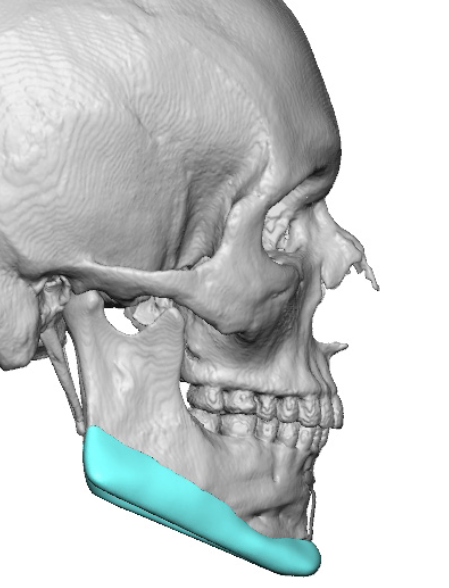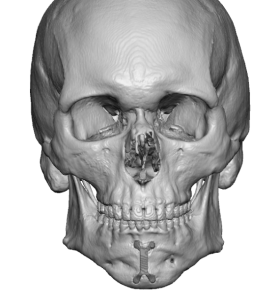Introduction
Chin augmentation is the original and most common form of jaw augmentation surgery. For many patients, it may represent their only effort at lower facial enhancement. Although the chin comprises only about one-third of the total jaw surface area, its prominence makes it the most visually important component of the lower face. Consequently, many patients view chin augmentation as a one-and-done procedure—unaware that their aesthetic needs may later evolve.
A unique subset of chin deficiencies involves inadequate vertical height. A vertically short chin contributes to facial roundness and lower facial disproportion. When this deficiency exceeds approximately 8 mm, implants alone are insufficient. Instead, correction requires a vertical lengthening genioplasty using an osteotomy with an interpositional bone graft. This technique allows the chin pad to descend with the bone, effectively lengthening the lower face.
However, this lengthening can produce an aesthetic imbalance—creating a discontinuity along the normally straight inferior mandibular border extending from the jaw angles to the chin. In such cases, the posterior jawline may appear deficient, prompting the eventual need for further augmentation. Only a custom jawline implant can harmonize the anterior and posterior contours, completing the lower facial enhancement.
Case Presentation
A young male patient presented with a round face and a vertically short chin. His primary goal was to increase chin height; he had no initial interest in additional jaw augmentation.
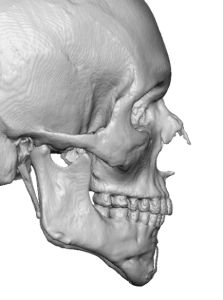
Several years later, the patient sought further enhancement, expressing a desire to augment the posterior jawline to achieve greater balance with his elongated chin. A custom wraparound jawline implant was designed for this purpose.
Implant Design and Surgical Technique
![]()
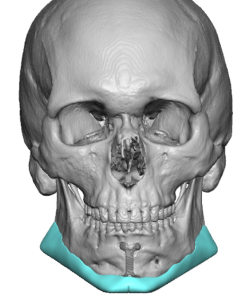
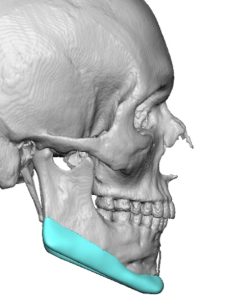
- Vertical jawline lengthening – to align the mandibular inferior border and restore a smooth, continuous mandibular plane angle.
- Additional horizontal chin projection – to compensate for the slight (1–2 mm) loss of projection that can occur from the counterclockwise rotation associated with vertical chin lengthening.
The implant was placed as a single-piece wraparound design via the standard three-incision approach: one submental and two intraoral incisions.
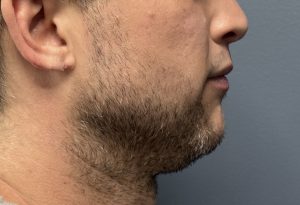
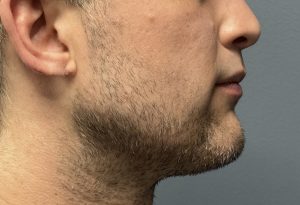
Discussion
While many patients initially pursue chin augmentation alone, some later recognize the benefits of a more comprehensive jawline enhancement. Although some surgeons advocate performing a complete jaw augmentation at the outset—using either standard jaw angle implants or a custom jawline implant—my approach is to proceed only with the changes the patient desires.
Preoperative imaging simulations explore various options, and I recommend a full jawline augmentation only if the patient perceives a clear advantage over chin augmentation alone. This approach not only respects patient autonomy but also acknowledges that one change can influence how other features are perceived later. Following chin augmentation, patients often develop a more refined sense of what additional improvements they may want.
In this case, the patient’s experience exemplifies an inadvertent two-stage jaw augmentation. Although requiring two separate surgeries and recoveries, this staged approach offered a major advantage: the patient developed a clearer understanding of his aesthetic goals over time.
An additional lesson from this case is that a custom wraparound jawline implant can be performed safely and effectively even after a prior bony genioplasty. The existing fixation hardware does not interfere with either implant design or placement.
Key Points
- Vertical lower face deficiency correction requires a combined approach—vertical chin lengthening with simultaneous jawline lowering and widening.
- In this case, a 16 mm vertical chin lengthening with an interpositional graft served as an inadvertent first-stage jaw augmentation.
- A custom wraparound jawline implant was later placed as the second-stage procedure to achieve full lower facial balance.
Barry Eppley, MD, DMD
World-Renowned Plastic Surgeon

